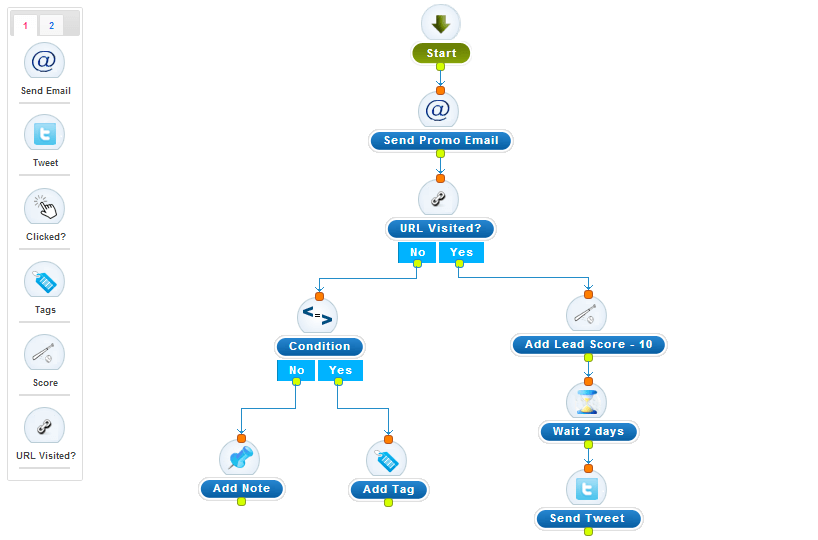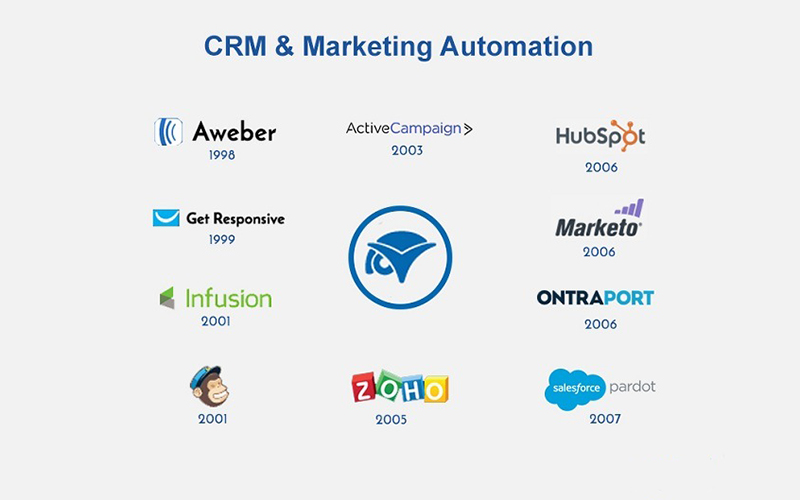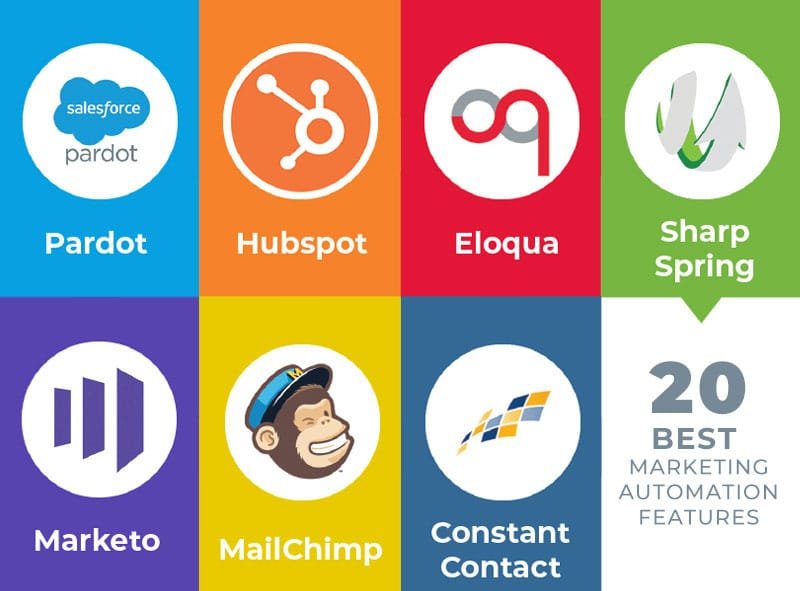Email automation tools help streamline your communication. They save time and boost efficiency.
In today’s fast-paced digital world, managing emails manually can be overwhelming. That’s where email automation tools come in handy. These tools automate repetitive tasks, helping you focus on more important activities. Whether you’re running a business or managing a personal project, email automation tools can significantly improve your productivity.
They handle tasks like sending follow-up emails, scheduling campaigns, and segmenting your audience. This way, you can ensure timely and consistent communication without the hassle. Dive into the world of email automation tools and discover how they can transform your email strategy. Stay tuned to learn more about the best options available and how they can benefit you.
Table of Contents
Introduction To Email Automation
Email automation is a powerful tool for businesses. It helps streamline communication.
By using email automation, businesses can save time and effort. It allows for personalized
and timely messages to be sent to customers.
What Is Email Automation?
Email automation is the use of software to send emails automatically. These emails
are triggered by specific actions or events. For example, a customer signs up for a
newsletter. An automated welcome email is sent to them.
The process involves setting up predefined rules. The software follows these rules
to send emails without manual intervention. It can handle a large volume of emails
efficiently.
Importance For Marketing
Email automation is crucial for marketing. It helps in creating personalized customer experiences.
- Increased Efficiency: Automates repetitive tasks, saving time.
- Personalization: Sends tailored messages based on customer behavior.
- Consistency: Ensures timely communication with customers.
- Scalability: Handles large volumes of emails with ease.
Businesses can segment their audience. They can target specific groups with relevant content.
This increases engagement and conversion rates.
Email automation tools provide analytics. Marketers can track open rates, click-through rates, and conversions.
These insights help in refining strategies.
Here is a simple example of an email automation workflow:
| Trigger | Action |
|---|---|
| Customer signs up | Send welcome email |
| Customer makes a purchase | Send thank you email |
| Customer abandons cart | Send reminder email |
By implementing email automation, businesses can enhance their marketing efforts. They can build better relationships
with their customers.

Key Features
Email automation tools are essential for any business looking to improve communication with their audience. These tools offer various features that streamline the email marketing process. Below, we explore some of the key features that make these tools indispensable.
Segmentation
Segmentation allows you to divide your audience into smaller groups. This is based on specific criteria like age, location, or purchase history. This feature helps in sending more relevant emails to each group.
For example, you can create segments for:
- New subscribers
- Regular customers
- Inactive users
This targeted approach increases the chances of engagement and conversions.
Personalization
Personalization makes your emails feel more personal and relevant. This feature allows you to insert the recipient’s name, and tailor content based on their preferences.
Common personalization elements include:
- First name
- Purchase history
- Browsing behavior
Personalized emails often see higher open and click-through rates.
Analytics
Analytics provide insights into the performance of your email campaigns. This feature helps you understand what works and what needs improvement.
| Metric | Description |
|---|---|
| Open Rate | Percentage of opened emails |
| Click-Through Rate | Percentage of clicked links |
| Bounce Rate | Percentage of undelivered emails |
With analytics, you can make data-driven decisions to optimize your campaigns.
Popular Email Automation Tools
Email automation tools help businesses save time and improve communication. They offer features like scheduling, segmentation, and analytics. Here are some popular email automation tools that can help you streamline your email marketing efforts.
Mailchimp
Mailchimp is one of the most well-known email automation tools. It is user-friendly and offers a wide range of features. Mailchimp allows you to create email campaigns, manage subscriber lists, and track performance. It also integrates with many other apps and services. This makes it a popular choice for small businesses and large enterprises alike.
- Drag-and-drop email builder
- Advanced segmentation options
- Detailed analytics and reporting
- Integration with e-commerce platforms
Sendinblue
Sendinblue is a versatile email automation tool. It offers more than just email marketing. Sendinblue includes SMS marketing, chat, and CRM tools. This makes it a comprehensive solution for businesses. The platform is easy to use and has a free plan with limited features.
| Feature | Details |
|---|---|
| Email marketing | Customizable templates and campaigns |
| SMS marketing | Send targeted SMS messages |
| Chat | Real-time chat with customers |
| CRM | Manage customer relationships |
Hubspot
HubSpot is an all-in-one marketing platform. It includes email automation, CRM, social media management, and more. HubSpot is known for its powerful automation features. It helps businesses create personalized email campaigns. HubSpot also offers detailed analytics to track performance.
- Comprehensive marketing tools
- Advanced automation workflows
- Personalization options
- Detailed performance analytics

Benefits Of Email Automation
Email automation tools have become essential in modern marketing strategies. They offer a range of benefits that can significantly improve your email marketing efforts. From saving time to increasing engagement, these tools are a must-have for any business looking to optimize their communication with customers. Below, we explore the key benefits of email automation.
Time-saving
One of the biggest advantages of email automation is the time it saves. Manual email tasks can take hours. With automation, you can set up emails to send at specific times or trigger based on customer actions. This means you can focus on other important tasks.
- Automated follow-ups
- Scheduled newsletters
- Triggered welcome emails
These automated processes streamline your workflow and free up valuable time.
Increased Engagement
Email automation tools help increase customer engagement. Personalized emails grab attention. They offer relevant content based on user behavior and preferences. This leads to higher open rates and click-through rates.
- Segmentation of email lists
- Behavioral triggers
- Dynamic content
With these features, your emails resonate more with your audience, making them more likely to engage.
Better Tracking
Email automation tools provide robust tracking and analytics features. You can monitor the performance of your campaigns in real time. This includes open rates, click-through rates, and conversion rates.
With detailed reports, you can:
- Identify what works
- Optimize your strategy
- Measure ROI effectively
Better tracking helps you make informed decisions and improve your email marketing efforts continuously.
Choosing The Right Tool
Selecting the best email automation tool can be challenging. You need to consider your business needs, budget, and user-friendliness. Let’s explore these factors in detail to help you make an informed decision.
Business Needs
Your business needs should be the first thing to consider. Do you need advanced features like A/B testing or segmentation? Or do you just need basic email automation? List your requirements in a table to compare different tools easily.
| Feature | Importance |
|---|---|
| Segmentation | High |
| A/B Testing | Medium |
| Basic Automation | Low |
Budget
Your budget is another critical factor. Email automation tools range from free to expensive. Some tools offer basic features for free, but you may need to pay for advanced features. Create a budget plan and stick to it. Here’s a simple breakdown:
- Free Tools: Limited features, suitable for small businesses.
- Mid-Range Tools: More features, affordable for medium businesses.
- Premium Tools: Advanced features, best for large businesses.
User-friendliness
User-friendliness is crucial. A complex tool can slow down your team. Look for a tool with an intuitive interface. Consider the learning curve. Check if the tool offers tutorials or support. Test the tool with your team before making a final decision.
Here’s a quick checklist to evaluate user-friendliness:
- Easy-to-use dashboard
- Drag-and-drop email builder
- Comprehensive tutorials
- Responsive customer support
Choosing the right email automation tool requires careful consideration. Evaluate your business needs, budget, and user-friendliness to find the best fit.
Setting Up Email Automation
Email automation tools save time and improve communication with your audience. Setting up email automation can seem daunting, but it is quite straightforward. This guide will help you through the process of creating a campaign, designing templates, and scheduling emails. Let’s get started with the basics!
Creating A Campaign
First, you need to create an email campaign. An email campaign is a series of emails designed to achieve a specific goal, like welcoming new subscribers or promoting a product.
- Define Your Goal: Determine what you want to achieve with your campaign. It could be increasing sales, engaging subscribers, or sharing updates.
- Segment Your Audience: Group your subscribers based on interests, behavior, or demographics. This helps in sending targeted emails.
- Choose a Campaign Type: Decide whether you want a welcome series, promotional emails, or newsletters.
Designing Templates
Designing templates is crucial as it affects how your emails look and feel. A well-designed template can make your emails more engaging and effective.
- Select a Template: Most email automation tools provide pre-designed templates. Choose one that matches your brand.
- Customize Content: Add your logo, images, and text. Make sure your content is relevant and engaging.
- Ensure Mobile Responsiveness: Many users read emails on their phones. Make sure your template looks good on all devices.
Scheduling Emails
Scheduling your emails ensures they reach your audience at the right time. This step is vital for the success of your campaign.
| Task | Description |
|---|---|
| Set Sending Times: | Choose the best times to send your emails. Consider your audience’s time zones and habits. |
| Automate Triggers: | Set up triggers like a new subscription or a purchase. This ensures emails are sent at the right moment. |
| Review and Test: | Review your schedule and test emails to ensure everything works correctly. |
By following these steps, you can set up effective email automation. This will save time and engage your audience better.
Best Practices
Email automation tools can greatly enhance your marketing efforts. But to maximize their potential, you must follow best practices. This ensures your campaigns are effective, compliant, and engaging. Below, we explore some key best practices.
A/b Testing
A/B Testing is essential for optimizing your email campaigns. By creating two versions of an email and sending them to different segments of your audience, you can determine which performs better. This helps you understand what resonates with your audience.
Here’s a simple process for A/B testing:
- Create two versions of your email (A and B).
- Send each version to a small segment of your audience.
- Analyze the results to see which version performs better.
- Send the winning version to the rest of your audience.
Use this method to test subject lines, images, call-to-actions, and more. It can significantly improve your email engagement rates.
Maintaining Quality
Maintaining the quality of your emails is crucial. Poor-quality emails can damage your brand reputation and result in high unsubscribe rates. Here are some tips to maintain email quality:
- Ensure your content is relevant and valuable to your audience.
- Keep your emails concise and to the point.
- Use clear and compelling subject lines.
- Include a strong call-to-action (CTA).
- Proofread your emails to avoid grammatical errors.
High-quality emails lead to better engagement and higher conversion rates.
Compliance With Regulations
Compliance with email marketing regulations is non-negotiable. Failure to comply can result in hefty fines and damage to your brand reputation. Key regulations to consider include:
| Regulation | Key Requirements |
|---|---|
| CAN-SPAM (USA) | Include a physical address, an easy opt-out method, and avoid misleading subject lines. |
| GDPR (EU) | Obtain explicit consent before sending emails and provide data access rights to users. |
| CASL (Canada) | Get consent, include sender information, and provide an unsubscribe mechanism. |
Always stay updated with these regulations to avoid legal issues. Compliance ensures trust and credibility with your audience.
Case Studies
Email automation tools have changed how companies interact with their customers. These tools help businesses save time and increase efficiency. Real-life examples showcase their effectiveness. In this section, we will explore case studies that highlight the benefits of using email automation tools.
Success Stories
Many companies have seen impressive results with email automation tools. Here are a few success stories that demonstrate the impact:
| Company | Challenge | Solution | Result |
|---|---|---|---|
| Company A | Low engagement rates | Personalized email campaigns | 30% increase in open rates |
| Company B | High cart abandonment | Automated follow-up emails | 20% decrease in cart abandonment |
| Company C | Manual email process | Automated workflows | 50% reduction in workload |
Lessons Learned
These case studies provide valuable insights into the use of email automation tools. Here are some key lessons learned:
- Personalization is key: Tailoring emails to individual preferences increases engagement.
- Timely follow-ups: Automated follow-up emails can reduce cart abandonment and lost sales.
- Efficiency: Automated workflows save time and reduce the manual workload.
By studying these examples, businesses can learn how to implement email automation tools effectively. The success stories and lessons learned offer practical guidance for achieving better results.
Future Of Email Automation
Email automation tools are constantly evolving. Companies must keep up with the latest trends. The future of email automation looks bright. It promises to bring more efficiency and personalization.
Emerging Trends
The future of email automation will see several emerging trends:
- Personalization: Emails will be more personalized. They will cater to individual user preferences.
- AI and Machine Learning: AI will predict user behavior. It will tailor emails accordingly.
- Integration with Other Tools: Email tools will integrate more with CRM and social media platforms.
- Interactive Content: Emails will include more interactive elements like polls and surveys.
Innovations
Several innovations will shape the future of email automation:
- Advanced Segmentation: Segmentation will become more precise. It will target users based on specific actions and behaviors.
- Predictive Analytics: Predictive analytics will forecast user actions. This will help in sending timely and relevant emails.
- Automated Workflows: Workflows will be more advanced. They will automate complex tasks with ease.
- Enhanced Security: Security features will improve. Protecting user data will become a priority.
| Feature | Description |
|---|---|
| Personalization | Emails tailored to individual user preferences. |
| AI Integration | AI predicts user behavior to customize emails. |
| Interactive Content | Emails with polls, surveys, and quizzes. |
| Advanced Segmentation | Precise targeting based on user actions. |

Frequently Asked Questions
What Are Email Automation Tools?
Email automation tools streamline the process of sending emails. They allow businesses to send personalized messages. This enhances customer engagement and saves time.
How Do Email Automation Tools Work?
Email automation tools work by using predefined triggers. They send emails based on user actions or specific times. This ensures timely communication with your audience.
Why Use Email Automation Tools?
Email automation tools increase efficiency and productivity. They enable personalized marketing and improve customer engagement. This leads to better conversion rates.
Which Features To Look For In Email Automation Tools?
Look for features like segmentation, analytics, and personalization. Also, ensure they integrate with your existing tools. This will enhance their effectiveness.
Conclusion
Email automation tools save time and boost productivity. They streamline communication processes. These tools help maintain consistent engagement with your audience. Easy to use and effective, they support business growth. Choose the right tool for your needs. Start automating your emails today.
Enjoy the benefits of increased efficiency. Improve your email marketing efforts with automation. Stay ahead in your industry by leveraging these tools. Happy emailing!



Leave a Reply